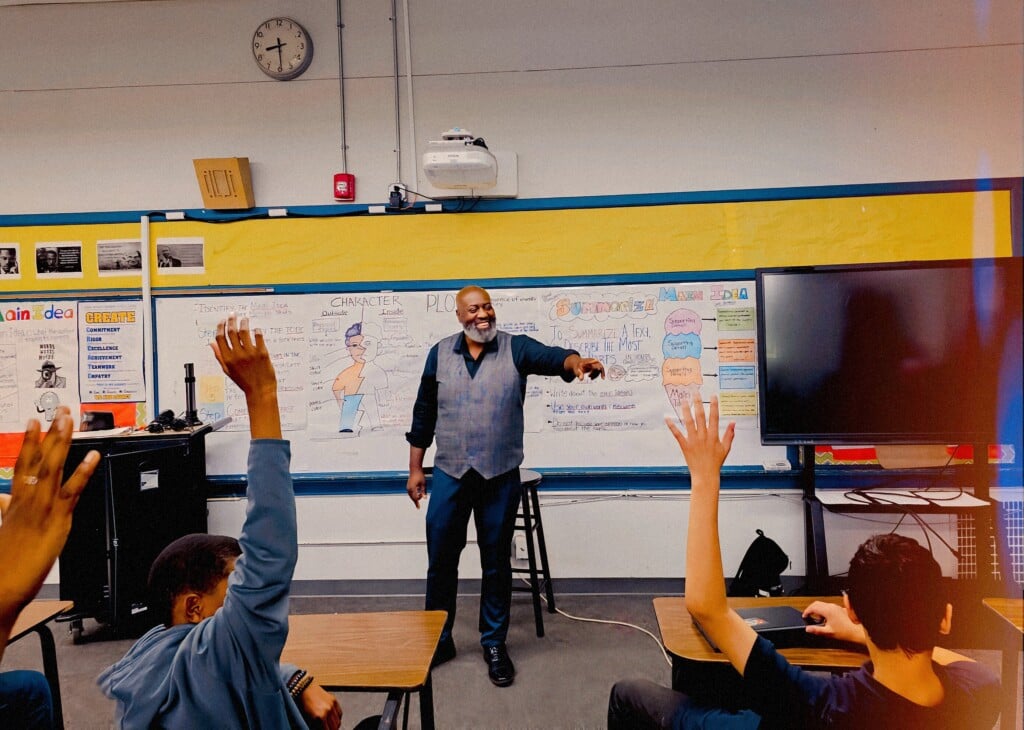Improve Your Child’s Performance with Primary Science Tuition Singapore
Improve Your Child’s Performance with Primary Science Tuition Singapore
Blog Article
A Comprehensive Overview to the Various Knowing Techniques in Key Science Instruction
The exploration of varied understanding methods in primary scientific research guideline presents an opportunity for educators to boost trainee interaction and comprehension significantly. By taking a look at hands-on learning strategies, inquiry-based techniques, and collective methods, we can recognize effective methods that accommodate numerous learning designs. In addition, the combination of innovation and distinguished direction plays an essential duty in fostering an inclusive atmosphere. However, the concern stays: exactly how can these techniques be efficiently executed in the classroom to optimize their effect? The answer lies in a closer analysis of each strategy and its ramifications for teaching science.

Hands-On Learning Strategies
Hands-on knowing strategies play a pivotal function in primary scientific research guideline, engaging trainees in energetic expedition and trial and error. These methods allow students to connect straight with materials and phenomena, promoting a much deeper understanding of scientific ideas. By utilizing manipulatives, designs, and real-life experiments, instructors create an environment where pupils can observe, hypothesize, and evaluate their concepts.
Such strategies not just improve comprehension however additionally grow vital thinking and problem-solving skills. When pupils join tasks like building easy makers, growing seeds, or carrying out chemical responses, they are urged to ask concerns and seek solutions via their own observations. This experiential technique assists to demystify complicated scientific principles, making them a lot more relatable and available.
In addition, hands-on knowing promotes cooperation amongst peers, as trainees typically work in teams to perform experiments or share searchings for. This synergy not only enhances their knowing experience yet additionally develops essential social abilities. Eventually, integrating hands-on techniques in primary science direction cultivates a long-lasting love of learning and inquisitiveness concerning the all-natural globe, laying a strong foundation for future academic pursuits in scientific research and past.
Inquiry-Based Understanding
Inquiry-based learning is an instructional approach that motivates students to ask questions, explore phenomena, and build their very own understanding of scientific ideas. This method moves the focus from standard teacher-led instruction to a more student-centered experience, where students take the initiative in their academic trip. By promoting curiosity, inquiry-based discovering advertises much deeper involvement with the material, permitting pupils to explore topics in a purposeful context.
In method, this strategy frequently entails hands-on experiments, monitorings, and vital reasoning activities that line up very closely with the clinical technique. Pupils are urged to create theories, design examinations, and evaluate data, which cultivates important skills such as analytic and analytical reasoning. The function of the educator in this structure is to promote expedition, guiding pupils through the questions process while motivating independent idea and collaboration.
Moreover, inquiry-based understanding nurtures a sense of ownership over the learning process, encouraging pupils to seek expertise proactively. This approach not only improves understanding of scientific concepts however additionally cultivates a lifelong love for learning, furnishing students with the abilities essential to navigate an increasingly complicated globe.
Collaborative Discovering Approaches
Collective knowing approaches equip trainees to participate in meaningful communications with peers, cultivating a shared responsibility for their instructional end results. In main science instruction, these methods urge learners to collaborate to check out scientific principles, fix problems, and perform experiments (primary science tuition Singapore). By joining team tasks, look at this web-site trainees can take advantage of diverse viewpoints, permitting richer understanding and retention of scientific understanding
One trick element of collaborative learning is the focus on interaction skills. Students should express their ideas, listen proactively to others, and bargain concepts, every check my blog one of which are essential expertises in both academic and real-world contexts. This social communication not just boosts their understanding of scientific principles however also promotes synergy and problem resolution abilities.
In addition, collaborative knowing commonly causes increased inspiration and involvement. They are extra likely to take ownership of their learning trip when trainees see the worth of their contributions within a group. Educators can facilitate this procedure by creating organized team jobs that line up with curriculum goals while giving assistance on reliable cooperation techniques. In general, incorporating joint learning strategies in key scientific research direction cultivates a dynamic learning atmosphere that prepares pupils for future scholastic and social obstacles.
Innovation Combination in Science
The integration of modern technology in key science guideline improves finding out experiences by giving cutting-edge devices and resources that support different teaching approaches, including joint learning - primary science tuition Singapore. Making use of digital platforms, simulations, and interactive applications enables students to involve deeply with clinical ideas, helping with a much more hands-on strategy to discovering
Virtual research laboratories, for example, enable learners to conduct experiments safely and effectively, advertising inquiry-based understanding. These devices can replicate real-world scientific scenarios, allowing pupils to imagine intricate processes that would certainly be challenging to replicate in a conventional class setup. Modern technology cultivates interaction and collaboration among students, as they can share findings and function with each other on tasks through on-line platforms.
Additionally, multimedia presentations and instructional video clips can enhance lessons by providing to varied knowing styles, making abstract principles extra obtainable. Data analysis tools also equip trainees to accumulate and analyze clinical data, enhancing important assuming skills. On the whole, the strategic incorporation of modern technology in key scientific research instruction not only enhances interaction but likewise prepares trainees for a technologically innovative society, equipping them with important skills for future scientific undertakings.
Separated Guideline Strategies
Differentiated direction approaches are vital for resolving the varied needs of learners in primary science education and learning. These techniques make it possible for instructors to customize their teaching approaches to accommodate varying abilities, interests, and finding out styles within the class. web By utilizing distinguished guideline, teachers can produce an inclusive setting that cultivates interaction and boosts understanding of clinical concepts.
One efficient approach is to make use of flexible organizing, which allows trainees to work together with peers at comparable skill degrees or with varying viewpoints. This technique urges peer learning and advertises essential thinking. In addition, supplying options in projects can empower students, allowing them to choose projects that reverberate with their interests while still satisfying curricular objectives.
Moreover, incorporating tiered projects is another beneficial technique. By creating tasks with varying levels of intricacy, teachers can ensure that all pupils are properly tested, despite their efficiency. Making use of formative assessments to determine comprehending additional makes it possible for instructors to readjust their educational approaches dynamically, ensuring that each learner receives the support they need.
Ultimately, carrying out set apart guideline techniques in primary science education not just improves trainee discovering end results but likewise grows an enthusiasm for scientific research, preparing students for future scholastic pursuits.

Conclusion
In recap, efficient primary science direction necessitates a complex approach that includes hands-on learning, inquiry-based techniques, and collective techniques. The combination of innovation and set apart guideline even more caters to varied knowing styles, promoting a setting favorable to expedition and important reasoning.
The expedition of diverse knowing approaches in primary science direction offers a possibility for teachers to boost student engagement and understanding considerably.Hands-on understanding methods play an essential duty in key science guideline, involving students in energetic expedition and trial and error.Inquiry-based understanding is an instructional approach that encourages students to ask questions, explore sensations, and create their very own understanding of scientific ideas.Collaborative learning strategies equip pupils to engage in significant communications with peers, cultivating a shared obligation for their academic results. In general, integrating joint knowing approaches in primary science direction cultivates a vibrant knowing atmosphere that prepares trainees for future scholastic and social challenges.
Report this page